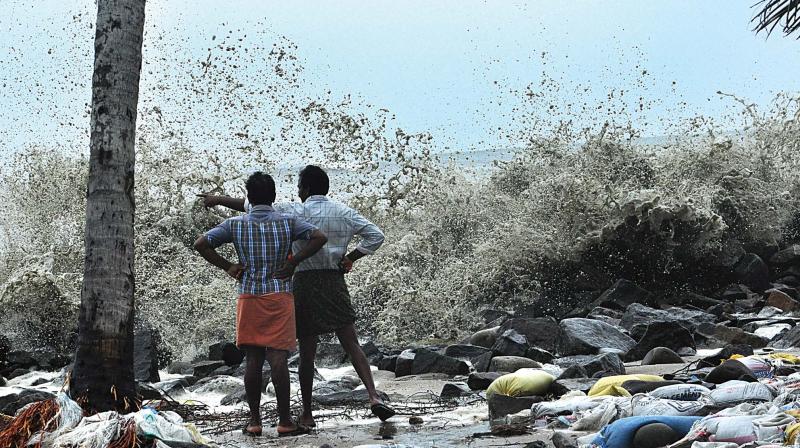Cyclone Ockhi: World Bank clears project for early warning system

THIRUVANANTHAPURAM: Ockhi has perhaps hastened the World Bank assistance for the State Disaster Management Authority's Early Warning Dissemination System (EWDS) under Cyclone Risk Mitigation Project, aimed at filling gaps in preparedness for issuing timely disaster alerts down to the last man and ensuring people's participation in mitigating the calamity impact. The World Bank nod follows the National Disaster Management Authority approving terms of reference to engage Telecommunications Consultants India Limited (TCIL) as technical consultants for the implementation of the Rs 15-crore EWDS.
The National Cyclone Risk Mitigation Project is already on, building up mitigation infrastructure and communication network. The EWDS installation and operation will facilitate State and District Emergency Operations Centres to send communication directly to villages using technologies such Global System for Mobile Communications (GSM) or Code Division Multiple Access (CDMA). It also envisages strengthening emergency operation centers (EOC) to canalize the warning through different communication modes. The system should also provide for redundancy in communication using satellite phones or any other similar technology that could be provided to key officials for communicating the warnings in the villages along with suitable backup systems.
Tools comprise high frequency hooters, strobe lights and pre-recorded messaging boxes from which warning can be triggered through location-based text SMS. The system shall enable KSDMA to send messages as popup on desktop computers, digital signage, billboard scrolls or static graphics, audio sirens, speakers, IP/SIP (VoIP) phones, beacon, email, social networks (Facebook, Twitter, WhatsApp) and TV &radio, SMS, MMS, recorded messages and push messages through state-wide free WiFi.
State Emergency Operations Centre being the nerve centre of disaster risk reduction initiatives in the state is to have a full-fledged operational decision support system (DSS) and communication system. The back end of the DSS is IBM Intelligent Operations Centre which enables SOP wise activity planning based on the emergent threats.
The State's coast, 580 km long and varies between 35 -120 km in width, is one of the most densely populated land areas in the country. Out of the total population of 3.33 crore, about 30 percent lives in the coastal zone. The coastline is exposed to strong wind, high waves, storm surges, 'Kallakadal' and Tsunami. Kallakadal represents a phenomenon that occurs during the pre-monsoon season and monsoon breaks along Kerala coast, which was adopted by UNESCO to refer to sea creeping into coast because of swells generated by storms generated near Antarctica.

